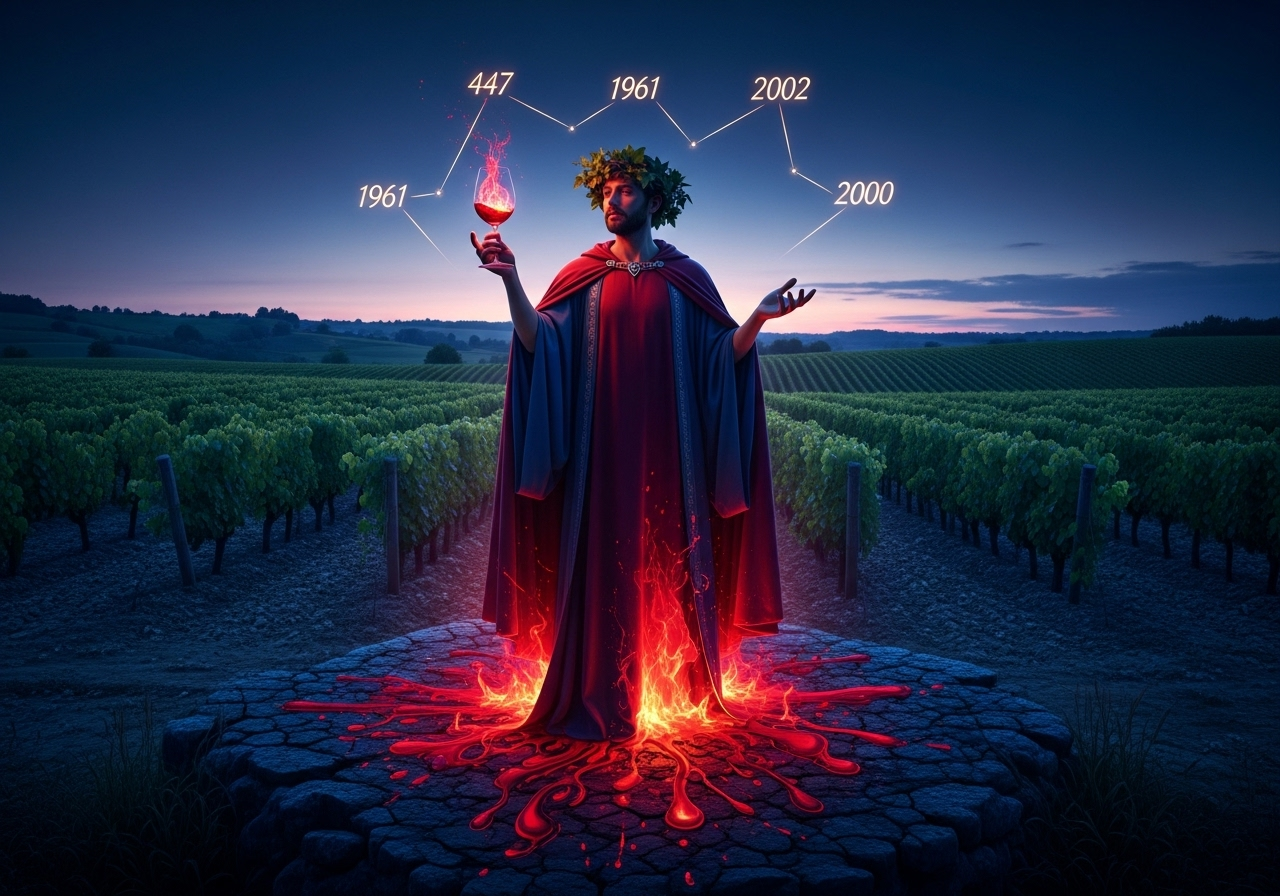Château Pétrus: The Blue Clay Crown of Pomerol
Château Pétrus, rooted in Pomerol’s rare blue clay, rose from obscurity to become Bordeaux’s most coveted wine. 100% Merlot, tiny production, and unmatched longevity make it the blue clay crown — the ultimate symbol of purity and prestige

From obscurity to obsession, Pétrus rose not with size or châteaux walls, but with clay, Merlot, and the relentless pursuit of perfection.
The Origins: A Modest Beginning (18th–19th Century)
Unlike the gilded First Growths of the Médoc, Pétrus was born without aristocracy. Its name first appears in the 18th century, a reference to Saint Peter (Petrus in Latin), whose statue still guards the estate.
For much of its early life, Pétrus was a modest property in Pomerol, a region then considered rustic and inferior to the Left Bank’s grand châteaux. Yet even in the 19th century, whispers of quality began to circulate — the soils beneath its vines were different.
The Soil: Blue Clay, the Vineyard’s Crown
At the heart of Pétrus lies a geological anomaly: a plateau of blue clay, unique to Pomerol. This dense, iron-rich clay holds water like a sponge, feeding the vines through hot summers and forcing them to root deep.
The result? Merlot of unmatched power and refinement. Where Cabernet rules the Médoc, Pétrus is pure Merlot — opulent, structured, and capable of decades of aging.
This soil is Pétrus’ true château, its fortress, its crown.
The Modern Rise: Loubat and Moueix (20th Century)
Pétrus’ transformation into legend came through two names: Madame Loubat and Jean-Pierre Moueix.
- Madame Loubat (1920s–1940s): The eccentric owner who believed fiercely in Pétrus’ greatness. While others doubted Pomerol, she insisted on charging high prices, aligning it with Bordeaux’s best.
- Jean-Pierre Moueix (Post-WWII): A visionary négociant who took over distribution and later ownership. He championed Pétrus abroad, especially in the United States, where it became the darling of collectors, politicians, and celebrities.
By the 1960s, Pétrus was no longer obscure. It was a global icon.
The Wine: Merlot Made Immortal
Pétrus is unlike any other Bordeaux:
- Varietal: Almost always 100% Merlot.
- Youth: Dense, brooding, full of black plum, truffle, violet, and earth.
- Maturity: Silky, layered, with aromas of chocolate, spice, leather, and an almost haunting length.
- Style: Both opulent and disciplined, lush yet precise.
Great vintages — 1947, 1961, 1982, 1990, 2000, 2009, 2010 — are among the most coveted wines in the world, often commanding astronomical prices.
The Cult: Scarcity and Obsession
With just 11.5 hectares, production is tiny. Demand, however, is boundless. Pétrus became the ultimate status symbol — served at White House dinners, gracing the tables of kings, tycoons, and film stars.
But beyond luxury, collectors prize Pétrus for its consistency and singularity. It is the rare wine that transcends hype: it delivers.
The Legacy: Today and Beyond
Now managed by Christian Moueix and the Jean-Pierre Moueix firm, Pétrus remains resolutely focused on its terroir. No flashy expansion, no second wine, no dilution of brand. Just clay, Merlot, and discipline.
In an era of marketing and spectacle, Pétrus stays monastic in its devotion to purity.
Liber’s Take: The Clay Crown of Kings
What fascinates me about Pétrus is its paradox. It has no château, no gilded architecture, no sweeping estates like Lafite or Latour. Its power is hidden — in soil, in silence, in stubborn Merlot.
Like me, Pétrus thrives not on decoration, but on conviction. It proves that greatness needs no ornament, no façade. Only truth in the earth, and the will to let it speak.
To drink Pétrus is to drink clay transformed into velvet, silence turned into song, Merlot crowned as king.
Conclusion: Why Pétrus Matters
In Bordeaux, power usually comes from size, lineage, or spectacle. Pétrus has none of these. Yet it stands among the greatest wines in the world because of one thing: a plateau of blue clay, and the will to believe in it.
Château Pétrus: the blue clay crown of Pomerol, where Merlot reigns eternal.





